I Saw the TV Glow ’s Jane Schoenbrun, Haley Dahl & Frances Quinlan on the Movie Soundtrack’s Power

Courtesy of A24
When I Saw the TV Glow director and writer Jane Schoenbrun was 12 or 13, they listened to what they describe as “post-Woodstock 99, disenfranchised white boy energy” bands like Limp Bizkit and others that “play[ed] on this notion of alienation, being the weirdo,” they tell Teen Vogue. At the time, those acts were at the forefront of alternative music.
A trippy homage to nineties sci-fi and horror series with rabid fandoms (with Buffy, Twin Peaks, and The X-Files as obvious reference points), the soundtrack for I Saw the TV Glow is similarly a paean to the alternative and indie rock that Schoenbrun, and many of its contributors, grew up on. Schoenbrun describes that 2000s alt music era as a “really weird meeting ground between this queer notion of otherness and white male anger.” So when the time came to make Schoenbrun’s teen angst soundtrack, they had other artists in mind — with a role for the “disenfranchised white boy energy,” to boot.
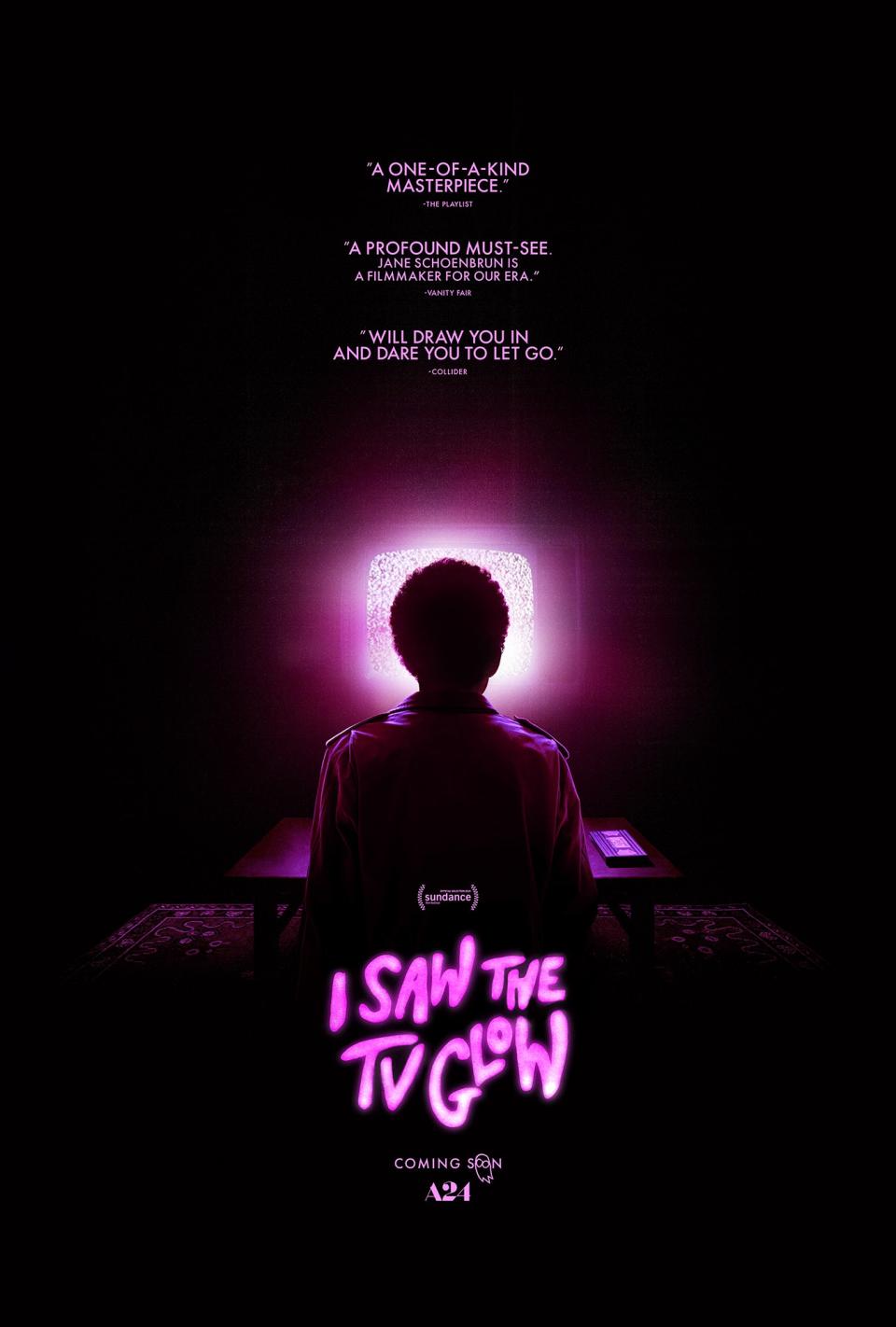
Released in early May in theaters and last week on streamers, TV Glow has had a long tail of growing hype through word-of-mouth, specifically among trans people. Part of the reason it has connected so deeply with viewers involves the decisions made by Schoenbrun — in collaboration with music supervisors Chris Swanson and Jessica Berndt of Secretly Group, and A24’s music team — regarding genre and sound; but it is also, of course, political.
The film features familiar names like Phoebe Bridgers on stage alongside Haley Dahl of Sloppy Jane, Alex G listed on the score credits, and Snail Mail’s Lindsay Jordan on the cast listing. The choice to use indie and alternative musicians, mostly women and nonbinary people, queer, from marginalized backgrounds – from Caroline Polachek, to Bartees Strange, to yeule, to Jay Som – is in stark contrast, the three agreed, to how the genre was represented while they were growing up. Prior titans of the format, particularly the Smashing Pumpkins, play an obvious influence in the film, with the video for “Tonight, Tonight” inspiring the visuals for the film’s “big bad” (with a cover of the song by Snail Mail, only available on the soundtrack vinyl record). Fred Durst of Limp Bizkit plays one of the protagonist’s dads, an archetypically harsh and emotionally removed source of the teen angst that motivates the plot.
At its core, the film is about egg cracks, a phrase I’ve never read in mainstream media as frequently as since covering the film. To have your “egg cracked” essentially means something that makes you realize you’re trans, which can look different for everyone; sometimes it’s a person, others an experience. For Owen, played by Justice Smith, and Maddy, played by Brigette Lundy-Paine, the in-universe television series The Pink Opaque (its name a Cocteau Twins reference) functions as a safe vessel within which to hide their explorations of their genders and sexualities as pre-teens then teens.
“Sometimes,” Maddy tells Owen, “The Pink Opaque feels more real than real life.” As the film progresses and Maddy and Owen grow into adults, Owen begins realizing that a part of him – maybe even the “real” him – may be trapped in The Pink Opaque forever, unless he decides to leave the life he knows behind.
The form of the film soundtrack used to be much more popular for shaping music taste before the streaming era – think Garden State, Eternal Sunshine of the Spotless Mind, but also Shrek, lol, and Twilight; or with TV shows, Schoenbrun’s favorite, Buffy, but The O.C. also comes to mind. While individual songs off film soundtracks (like the 2023 Barbie soundtrack) often gain popularity or go viral, Schoenbrun’s vision, they told NPR, was in contrast to the kind that goes into such blockbusters: “I really wanted to make a soundtrack that wasn't like marketing.”
In a cover story all about the film’s soundtrack, Paste Magazine called it the “most cohesive soundtrack released in the last 15 years.” Pitchfork’s review compared it to “a CD-R with a tracklist written in Sharpie, passed around a group of friends amid reverent whispers;” in interviews, Schoenbrun refers to it as a mixtape.
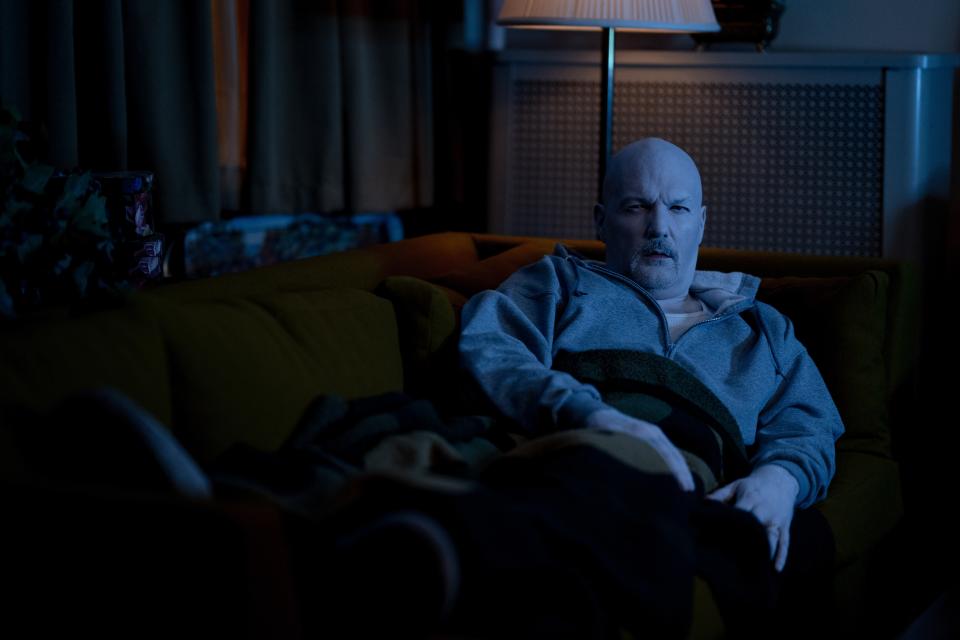
I Saw The TV Glow
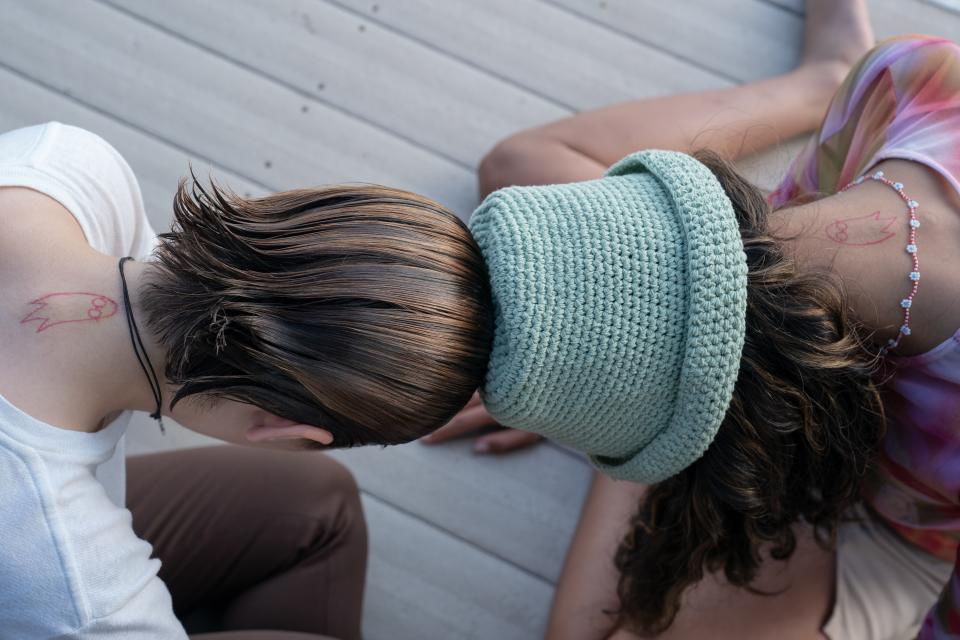
I Saw The TV Glow

“The face of teenage malaise used to be a beautiful white boy. Jake Gyllenhaal,” Dahl tells Teen Vogue, laughing a little and referencing the 2001 film Donnie Darko, which also clearly influenced the film. “Which is crazy, cuz that's the least oppressed person, but it used to be the almost, like, pre-school shooter person who's seen as the misfit.” Dahl makes clear she wasn’t above it, saying she thought she had no choice but accept her favorite artist “would be horrific to me if I was ever in the same room as them.” Says Dahl, “If I wanted to be a musician, I would have to eat that grain of salt constantly, men being horrible to me.”
That era of the 2000s and 2010s saw bands like Bright Eyes (fronted by Bridgers collaborator Conor Oberst) becoming popular. For Schoenbrun, it feels hard to detach how this music is often feminized and patronized to – deemed “angsty” – because our conventions of gender equate sensitivity or emotional intelligence with femininity, and also negative vulnerability.
“I remember being so embarrassed of loving Buffy or Bright Eyes because of the way it was thought of as ‘for girls,’ or in a reverse case ‘whiny.’ I think that what people might have meant by whiny is ‘girly’ or not traditionally falling within the gender roles of masculinity, which obviously is exactly what I loved about it,” Schoenbrun tells Teen Vogue. “I've just always found something to really love in music that feels like it's coming from this classical place of teenage angst. I think it's a very earnest and potentially even embarrassing space to occupy exactly because of how sincere it is, and that feels to me not unrelated to my queerness.”
That sincerity and engagement with the form comes across in the use of vocal pitch modulation, popularized in the last few years via hyper pop and the producer SOPHIE, and also a favorite technique of Alex G (who wrote the score) in his own music. It’s employed by the artist yeule on a glitchy cover of Broken Social Scene’s “Anthems for a Seventeen Year Old Girl” as the soundtrack’s first song. (Of this specific choice, Schoenbrun told Indiewire: “That song isn’t just about being a 17-year-old girl. It’s about being a 17-year-old girl and feeling not cis normal, like you don’t fit in with the people who have assimilated to a sense of normative culture.)
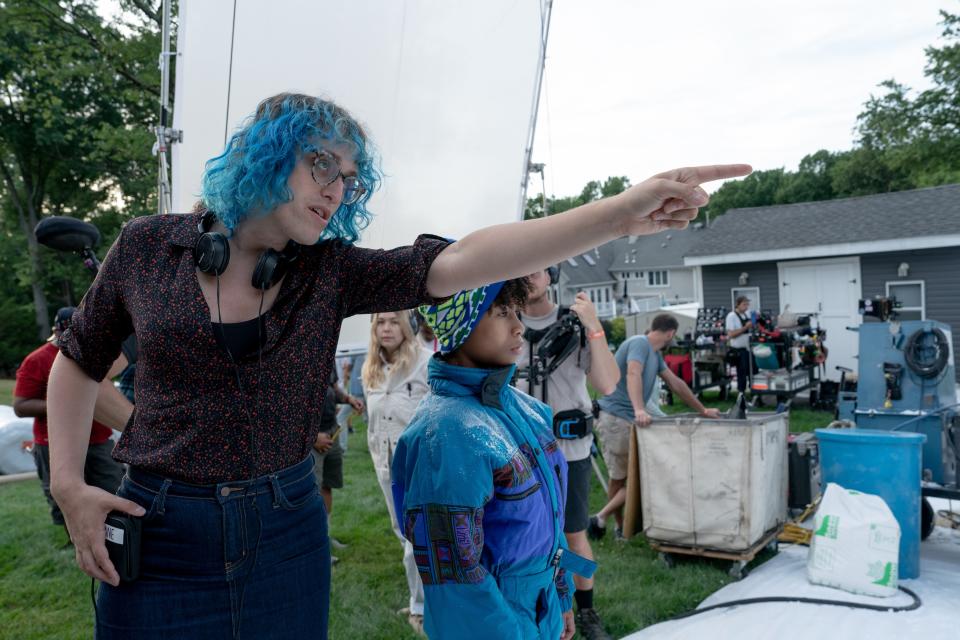
I Saw The TV Glow
Frances Quinlan of the band Hop Along contributed the song “Another Season,” which plays over the end credits with Kyle Pulley of Headroom. In an Instagram post about their participation in the film, they asked the film’s question — which feels resonant for the experience of being a young trans person in America today: “What greater horror is there than being young and having to abandon yourself for the sake of safety?”
In the end, without giving many spoilers, the film ends on one final message, one that has resonated with its viewers in a way that makes Schoenbrun feel compelled to distance themselves from the work: There is still time.
"It's very heartening that younger people can look at the world and all of the things that I was raised to be told made sense, that never really made sense, and have a little less of a tough time calling out all of our binary and entrenched worldviews that are far, far outdated."
In this moment of transphobic legislation, the film’s growing impact is hard to calculate. A friend at Them asked me to ask Schoenbrun if they thought it was too soon to get the film’s fandom-y tattoo; Schoenbrun replied they’ve been tagged on social media daily in photos of viewers getting the little pink ghost from The Pink Opaque tattooed. It takes a special kind of movie to be simultaneously “indie” and having enough of an impact that the Letterboxd reviews are chock-full of people sharing they came out after seeing it, crediting Schoenbrun and the project with reminding them there’s always still time to be yourself.
“It's an interesting thing to start trying to understand yourself while you're so young, because there's a pressure to understanding yourself, and you're still new to who you are,” Quinlan tells me on the subject of “teen angst,” emo, and queer and trans identity. For Quinlan, who came out as nonbinary in 2021 after several years working professionally as a musician, “The timing definitely felt like kismet, just for what the film is. It's just so exciting that a film like this has finally come out. For the time that we're in, for what people are realizing about themselves, to have something like this as a point of access for younger people, it’s about time.”
To Quinlan’s point, there is a whole generation of trans people who have been on hormones since childhood, raised by supportive parents. Simultaneously, there are seemingly ever-more trans adults finding themselves, experiencing a second puberty. Both Schoenbrun and Quinlan came out as trans in adulthood; Quinlan uses the phrase “late bloomer” repeatedly. But, as Holden Seidlitz wrote in his New Yorker profile of Schoenbrun, I Saw the TV Glow is “a film about insisting on futurity” — that there is never a bad time to embrace yourself, even if it wasn’t safe to at another time, even if that time is now. The film’s fragmentary relationship to time felt inherently queer and trans, reminding me of José Esteban Muñoz’s Cruising Utopia, echoed in the glitchy, discordant range on the soundtrack. As many songs whisper as scream; King Woman’s “Psychic Wound” was especially affecting, following after “Claw Machine.”
On the book’s much-referenced first page, Muñoz writes:
Often we can glimpse the worlds proposed and promised by queerness in the realm of the aesthetic… especially the queer aesthetic frequently contains blueprints and schemata of a forward-dawning futurity… Queerness is essentially about the rejection of a here and now and an insistence on potentiality or concrete possibility for another world.
Even if you don’t go through the door, the radical thing is the decision to find it, to see it, and — on your time — to go through. I Saw the TV Glow is more than a glimpse: It’s an ever-waving, open-ended question, baked within it an answer that gestures to the endlessly-expanding future. I identify the same absurdist fragment-as-futurism tendency in Twin Peaks, yet another open reference point for Schoenbrun.
Just in the writing of this story, its inherent truth showed itself to me. Quinlan has been my favorite vocalist for nearly ten years; I’ve seen Hop Along live easily 4 or 5 times. (Schoenbrun, who claims they’re entering their ambient and jazz era since releasing the film, told me they’ve seen the band eight or nine times.) When I saw them perform in September 2019 in our shared hometown of Philadelphia, we accidentally matched outfits, and I was mistaken for Quinlan in the parking lot leaving to head home. The day after that show — newly experimenting with being nonbinary — I cut my hair off for the first time.
On Zoom, telling them this, we looked at each other in band tees and close-cropped hair, having never spoken, and I felt smacked with the obvious power of the film bringing trans people together, and closer to themselves. It’s the “kismet” Quinlan identified in being asked to contribute, that Dahl felt, too, seeing how many of her own artistic motifs — the color blue, for one — were in the film from the start.
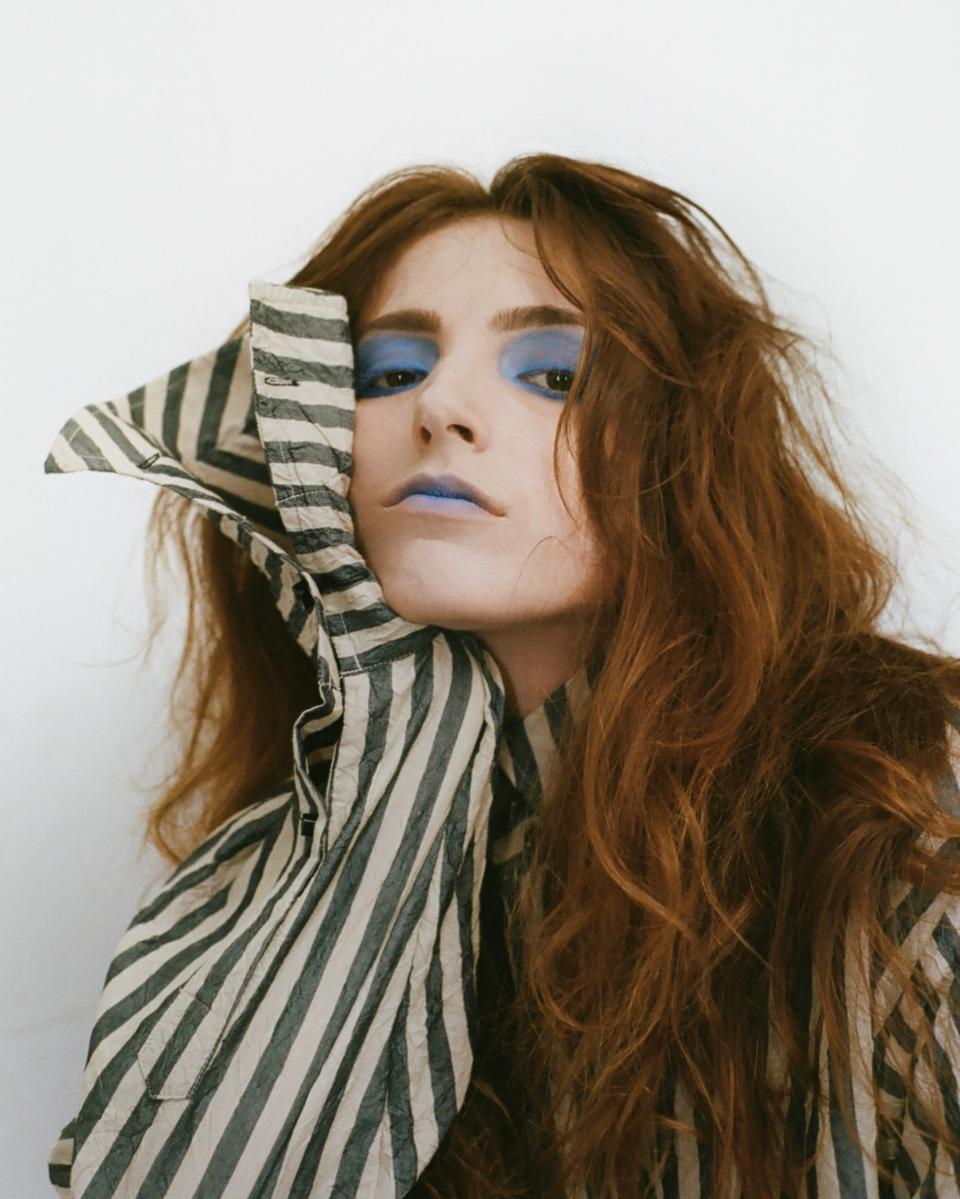
Schoenbrun, Quinlan, and Dahl, of course, all had teen-dom in mind while working on the project, and acknowledged the special possibility in being open and vulnerable about your suffering as a way of surviving it. Dahl said “Claw Machine” was the first time she’d written music about the depression and eating disorder that afflicted her adolescence and teen years, returning to her and Bridgers’ time in high school to write the lyrics. The song opens with the film’s title: “I saw the TV glow, I/I'm in the eighth grade/Sending grown men grainy photos/Of my ribcage.” She’s been open with the media that this line is about her former years on eating disorder Tumblr.
Over a decade later, one of Dahl’s older songs, written when she was 15, about her eating disorder, has been going viral on TikTok. “Teens are going through the same shit,” says Dahl. “Something that I learned in my group and in recovery is, that's what you know, your disorder or your vice; whatever it was, was a tool of survival at the time that you needed it especially if it's something that you started in your adolescence, during a time when you had no autonomy, no friends, no community.”
“I feel hopeful that we are getting away generationally from whatever the brain rot of the 1950s when all of our American problems – around conformity and gender norms and the nuclear family, capitalism as an unquestionable force of prosperity for all who deserve it,” Schoenbrun says. “The further we get away from that, the less brain rot I feel from the perspective of people on the world and country around them.
“It's very heartening that younger people can look at the world and all of the things that I was raised to be told made sense, that never really made sense, and have a little less of a tough time calling out all of our binary and entrenched worldviews that are far, far outdated. The kids today have a far less hard time looking at all of that and being like, none of this makes sense. It's hopeful and awesome.”
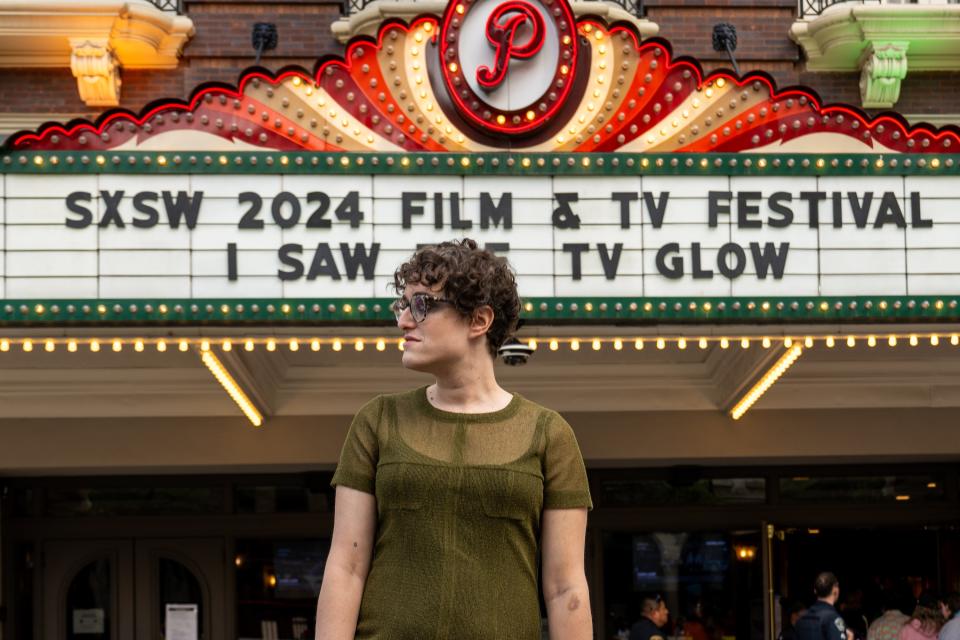
'I Saw The TV Glow' - Premiere - Arrivals - SXSW 2024 Conference and Festivals
Originally Appeared on Teen Vogue
Want more great Culture stories from Teen Vogue? Check these out:
A New Generation of Pretty Little Liars Takes on the Horrors of Being a Teenage Girl
Underneath Chappell Roan’s Hannah Montana Wig? A Pop Star for the Ages
Donald Glover’s Swarm Is Another Piece of Fandom Media That Dehumanizes Black Women
On Velma, Mindy Kaling, and Whether Brown Girls Can Ever Like Ourselves on TV
Gaten Matarazzo Talks Spoilers, Dustin Henderson, and Growing Up on Stranger Things
How K-pop Stars Are Leading Mental Health Conversations for AAPI People and Beyond
Meet the Collective of Philly TikTokers Making You Shake Your Hips
The Midnight Club Star Ruth Codd Isn’t Defined By Her Disability


